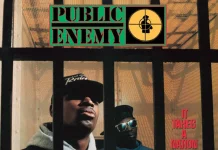I love this story, especially because I’ve been telling people for years that in order to get anything done, it all starts with an ask, an action that is hard to do, but worthwhile. You let people help. You let people do what they do in order to both feel great, or achieve something you both wouldn’t be able to do on your own.
FYI Music has long wondered just how CIRPA managed to con-vince Canada’s broadcasters to fund FACTOR given the acrimony that came with the content regulations. Former Attic Records’ partner Tom Williams was central to the story and yesterday they reached out and asked him how it all came to be. The following is his response.
When we were chatting today on the phone, you asked me how a guy from an indie Canadian label convinced broadcasters to dip their hands in their back pocket to fund FACTOR, I flippantly replied, “It was easy.”
In fact, it was. I wasn’t just from Attic, I was president of CIRPA, which was giving the broadcasters a lot of grief at the time.
J Robert Wood at CHUM had been complaining for months that there weren’t enough Canadian records to choose from (I totally disagreed, of course).
I saw a story in the paper that CHUM was giving $50,000 that year to a stage band festival. I was only vaguely aware of the CRTC commitment that stations had to make so I took a closer look.
I made an appointment with “J. Bob” and went to see him. It is possible that Earl Rosen came with me, but I don’t remember for sure.
In any case, I essentially told him to take CHUM’s commitment money and put it into a recording fund, which would give him a lot of brownie points with the CRTC, provide him with more recordings, and provide our members and others with a source of funding.
My recollection is that he didn’t ask for time to think about it, but agreed to it in principal if I could get some other broadcasters involved.
I was going on a trip to Western Canada the following week, and phoned Moffat PD Chuck McCoy in Vancouver and outlined my idea and asked him to set up a meeting with a decision maker. Moffat’s head office was in Winnipeg, and Chuck set up a meeting with Jim McLaughlin, who was in charge. All three of us met in Jim’s office and, like Bob, he agreed right away.
This was pretty amazing that the two arch rivals decided to do something together.
When I got back to Toronto, I can’t remember if CHUM suggested I try to get Rogers involved or whether I did it on my own. The thinking was if we got the two biggest chains, why not go from broke.
I met with Jim Sward at CFTR and, like the others, he immediately agreed.
All broadcasters at that time hated giving that money away to projects, which did them little good so, in a way, this was a godsend to them.
An implied benefit at that time was that maybe CIRPA would back off a bit over license renewals. Implied only.
Once everyone had agreed, we set up a meeting of all three in the CHUM boardroom. No one from Rogers or Moffat had ever been inside the CHUM building before, and it was quite an event in Canadian Broadcasting and Music History.
I remember having some input into the structure of FACTOR, but the nuts and bolts were hammered out elsewhere by an appointed committee.
I sat on the board of FACTOR for several years, until I retired from Attic Records.
FACTOR, of course, has become much more than that little recording fund we had initially envisioned. I am not totally sure that has been healthy for the industry, but that is another discussion.
Tom







